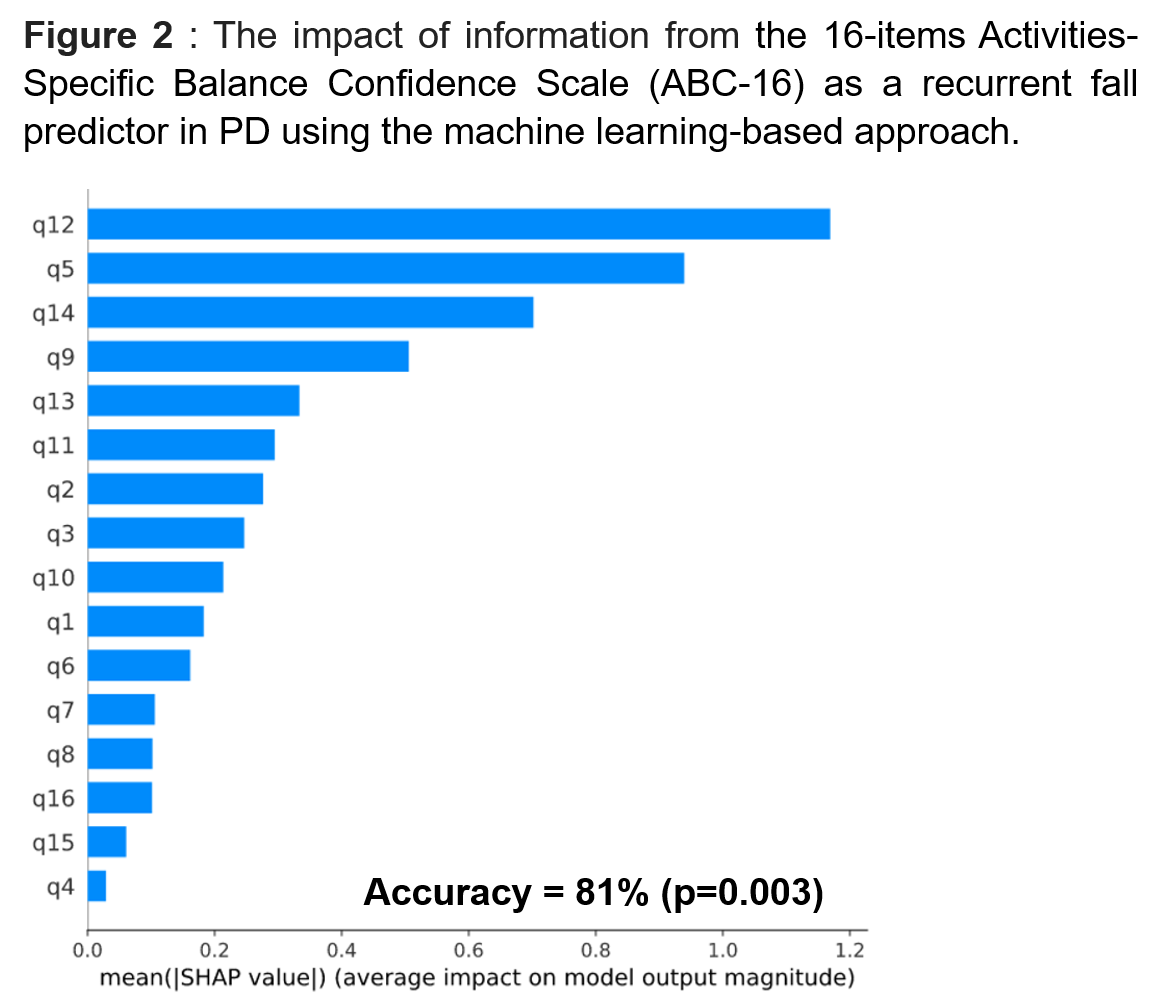Category: Parkinson's Disease: Neurophysiology
Objective: To explore the prediction of falling in PD using a machine-learning-based approach.
Background: The strongest predictor of falling in Parkinson’s disease (PD) is the number of previous falls within the past year. However, there is limited information about how the impact of other risk factors of falling such as disease severity and fear of falling in particular activities contribute to falling risk in this population.
Method: 305 PD patients with H&Y stage 1-4, with or without a history of falls, were recruited. Data were classified into 3 categories; clinical features, medications and balance confidence (fear of falling), scaled by the 16-item Activities-Specific Balance Confidence Scale (ABC-16). Machine learning models were constructed using XGBoost for each data category to explore the prediction of falls, and recurrent falls in PD. Hyperparameters of these models were optimised using the Optuna framework subjected to the accuracy of the prediction. The learned models were tested for performance and P-value using a permutation test and explained using the SHAP algorithm.
Results: The accuracy of clinical features that could predict falls in PD was 73% (p=0.001). The five most important features were H&Y stage 3 and 4, disease duration, akinetic-rigid symptoms, current age and a presence of wearing-off. The use of any anti-PD medication had only a 55% accuracy (p=1.0), however, the ABC-16 scale could better predict falls with an accuracy of 73% (p=0.001). Of the scale items, the strongest predictor of falling was item 7 (sweep on the floor), followed by item 12 (walk-in crowded mall), item 13 (walk-in crowd/bumped), item 1 (walk around house), item 11 (up and down ramp) and item 9 (get in/out of car). All these high-risk activities involved vertical movements associated with cognitively demanding tasks. When recurrent falls were analysed, the ABC-16 scale had a higher accuracy (81%, p=0.003) and the strongest predictor of falling was item 12, followed by item 1 and item 5 (reach on tiptoes).
Conclusion: Our novel machine-learning-based study demonstrated that predictors of falling combined PD disease itself and environmental factors including high-risk activities that required vertical movements with cognitive attention. Big data analytics on large Thai PD population-based studies are being planned to identify detailed risk associations that could potentially be implemented in future fall prevention strategies.
To cite this abstract in AMA style:
P. Panyakaew, N. Pornputtapong, R. Bhidayasiri. Improving fall prediction in Parkinson’s disease: A machine-learning-based approach [abstract]. Mov Disord. 2020; 35 (suppl 1). https://www.mdsabstracts.org/abstract/improving-fall-prediction-in-parkinsons-disease-a-machine-learning-based-approach/. Accessed April 19, 2025.« Back to MDS Virtual Congress 2020
MDS Abstracts - https://www.mdsabstracts.org/abstract/improving-fall-prediction-in-parkinsons-disease-a-machine-learning-based-approach/


